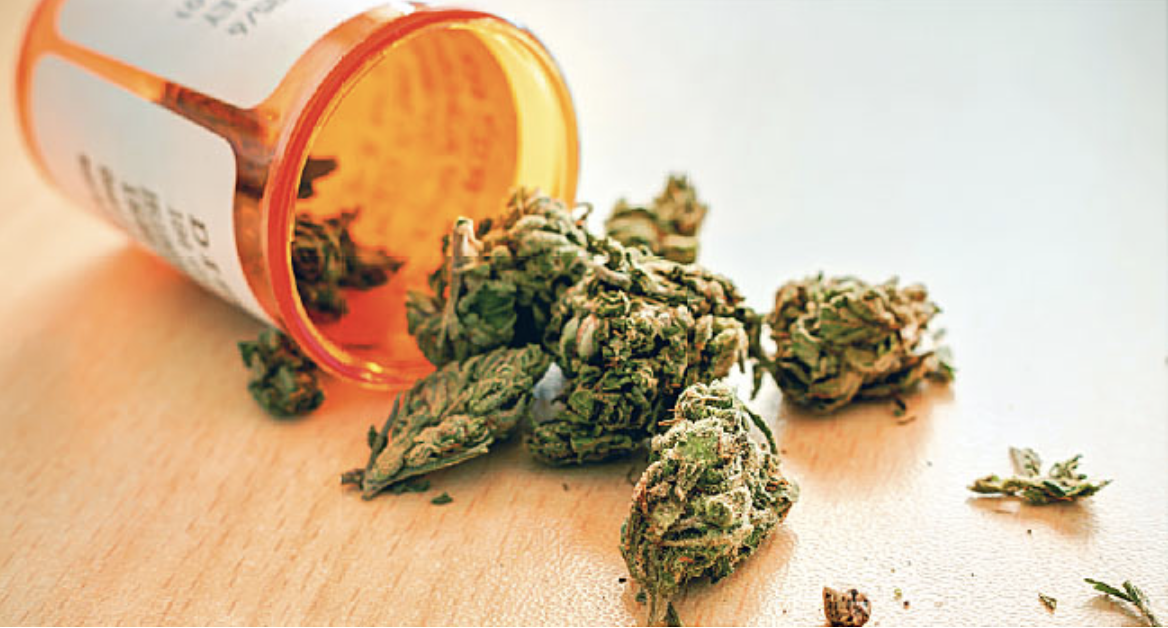
Debunking the negative stereotypes of Cannabis use
As healthcare providers and physicians, we increasingly see patients using medical marijuana in our clinical practices. While medical marijuana was historically shunned due to its classification as a Schedule I drug, its variable potencies and unpredictable patient responses, modern medical marijuana has made significant inroads in medical practice. Currently, in the United States, a total of 31 states, the District of Columbia, Guam and Puerto Rico allow public medical marijuana and cannabis programs. In addition, another 15 states allow the medical use of low THC, high cannabidiol (CBD) products.
Research shows that 76% of physicians would prescribe medical marijuana while between 60-80% of Americans support medical marijuana use.

Despite this support, misconceptions regarding medical marijuana are prevalent and many physicians are unsure of the best practices in recommending medical marijuana or managing patient use. Research on medical marijuana use and its safety has lagged in the scientific community due to its restricted use as a Schedule I drug. Likewise, federal laws such as the Marijuana Tax Act have limited its prescription. In addition, the myriad available formulations of cannabis products pose a challenge in ensuring a standardized dose. Stigma associated with medical marijuana use is still prevalent and some healthcare facilities restrict use despite supportive state laws. Regardless of individual opinion, marijuana is widely used by patients and it is vital that physicians are knowledgeable in its use.
Widespread efficacy in medical disease.
Medical marijuana has a wide array of medical uses ranging from treating chronic medical disease to alleviating difficult to treat symptoms. Research indicates a benefit in managing nausea associated with chemotherapy, decreasing intraocular pressure in glaucoma, reducing spasticity in multiple sclerosis, decreasing pain and inflammation, and helping with the severity of seizures among other benefits.2 The widespread medical benefits arise from its two main pharmacological compounds, tetrahdrocannabinol (THC) and cannabidiol (CBD). These compounds affect the endocannabinoid system found throughout the nervous system. THC strongly activates the cannabinoid type 1 and 2 (CB1 and CB2) receptors while CBD has multiple pathways of actions that may include antagonization of cannabinoid receptors.3 Importantly, CBD does not appear to have any hallucinogenic or euphoric effects like THC is well known to cause. Therefore, CBD offers the possibility of using medical marijuana without the “high.”
Pain management- an improved opioid?
Multiple studies indicate the benefits of medical marijuana in treating neuropathic and cancer pain.2 Medical marijuana may augment the analgesic effects of opioids, allowing patients to decrease the opioid dose or serve as an effective alternative to opioids.4 In addition, use of medical marijuana may promote opioid analgesia in these patients, allowing physicians to reintroduce an opioid that was ineffective previously.4 With the increasing backlash and concern related to the overuse and abuse of opioid pain medications, medical marijuana may serve a valuable tool in reducing the risk of addiction as it has low acute toxicity and a reduced risk of overdose.5 Indeed, states allowing medical marijuana use have lower rates of opioid overdose.5
“With the increasing backlash and concern related to the overuse and abuse of opioid pain medications, medical marijuana may serve a valuable tool in reducing the risk of addiction.” Click to tweet.
Medical marijuana is not a gateway drug
Controversy remains regarding the relationship of cannabis products to “hard” illicit drugs such as cocaine and heroin. The “gateway hypothesis” suggests that marijuana use is a precursor to the use of these illicit drugs. An important distinction in this controversy is whether the population studied consists of recreational cannabis or medical marijuana users. Medical marijuana users tend to have higher levels of pain and concurrently use opioid medications compared to general cannabis users.5 Recent data suggests that medical marijuana users are not more likely to use illicit drugs when compared to those who do not use medical marijuana.5,6 On the other hand, researchers found that recreational cannabis users, especially adolescents and young adults, are more likely to use illicit drugs or abuse prescription pain medications.5,7 Importantly, other research indicates that medical marijuana use may decrease the risk of prescription opioid abuse. Overall, it appears that the gateway hypothesis does not apply to medical marijuana users, and this population is not at an increased risk of using illicit drugs.5
Importance of communication within the healthcare community.
It is vital that healthcare providers and physicians communicate amongst themselves regarding patients’ medical marijuana use. Studies show that medical marijuana users often concurrently use opioid medications,5 which may affect the pharmacokinetics of medications. Prescribers must be aware that patients obtain pain medications from alternate prescribers, some of which are unlikely to participate in electronic medical records (EMRs) at this point. Some healthcare institutions have created medical committees to determine best practices for maintaining patient information on medical marijuana as safely as possible from outpatient to inpatient settings.
Risks associated with medical marijuana use.
Despite its purported benefits, it is vital that clinicians are aware of and able to manage the known side effects of medical marijuana when recommending its use to patients. Medical marijuana has a wide array of short term adverse effects. Common acute side effects include confusion, dizziness, dry mouth, fatigue, somnolence and nausea/vomiting. Other more serious adverse events are traumatic to patients such as hallucinations and a predisposition to developing psychosis.3,8 Patients with a history of mood and anxiety disorders like bipolar and social anxiety disorders may be more likely to have adverse events if they use medical marijuana.3 Less is known about the long term effects of medical marijuana as long term data is based on recreational users. Despite lack of specific research, practitioners must alert medical marijuana users of concerns related to chronic marijuana ingestion such as impaired memory and concentration. Also, doctors must counsel patients about the risk of accidental ingestion by family members especially in the case of edibles that look like sweets and candies.3 Furthermore, patients must be aware that if driving while under the influence of medical marijuana, they are driving while impaired.
Understanding the different types of medical marijuana.
There are multiple forms of medical marijuana with varying potencies and effectiveness. Medical marijuana can be inhaled, smoke or used orally, sublingually or topically.2 Physicians should know the concentration of the active component (whether CBD or THC) and the way in which the patient consumes it. Over the past several decades, the percentage of THC in cannabis products has increased dramatically, with most cannabis containing about 15% THC (up from 1-5% in the 1960s).3 Even more concentrated cannabis preparations, which are close to pure THC, is becoming widespread. This raises concerns of increased risk of adverse events since amounts as small as one-tenth may create the same effects.
Another important consideration is the route of administration. Active chemicals are affected by combustion, exhalation and side stream, meaning that absorption will differ between vaporized and smoked forms.3 Physicians must also be aware of the different potencies of edibles, cannabis oils, and topicals. The absorption of edibles is highly variable since THC is absorbed inconsistently and must go through a first pass effect when eaten. In addition, many patients notice that the effect of edibles is more intense and lasts longer than inhaled forms. The use of cannabis oils is gaining traction due to media suggestion of their anti-cancer properties, although this research is not conclusive. Cannabis oils may be homemade or purchased from local dispensaries, with varying potencies that are difficult to establish. Physicians must go beyond simply asking the name and dose of medical marijuana to inquiring about type, potencies and manufacture to gain a well-rounded understanding of their patients use.3
Due to its increasing popularity and benefits in a wide range of medical conditions, physicians need to be cognizant of the risk and benefits of medical marijuana to effectively counsel patients on its use. Physicians must become familiar with the various formulations and doses of medical marijuana as well as interactions with other medications, especially opioid drugs. Ideally, increased regulation and regulatory guidance should help standardize medical marijuana formulations and thereby ease the burden on healthcare providers when caring for patients who use medical marijuana.
References
1. Adler JN, Colbert JA. Clinical Decisions. Medicinal Use of Marijuana–Polling Results. N Engl J Med. 2013;368(22):e30. doi:10.1056/NEJMclde1305159
2. Whiting PF, Wolff RF, Deshpande S, et al. Cannabinoids for Medical Use: A Systematic Review and Meta-Analysis. Jama. 2015;313(24):2456-2473. doi:10.1001/jama.2015.6358
3. Peters J, Chien J. Contemporary Routes of Cannabis Consumption: A Primer for Clinicians. The Journal of the American Osteopathic Association. 2018;118(2):67-70. doi:10.7556/jaoa.2018.020
4. Lucas P. Cannabis as an Adjunct to or Substitute for Opiates in the Treatment of Chronic Pain. J Psychoactive Drugs. 2012;44(2):125-133. doi:10.1080/02791072.2012.684624
5. Perron BE, Bohnert K, Perone AK, Bonn-Miller MO, Ilgen M. Use of Prescription Pain Medications among Medical Cannabis Patients: Comparisons of Pain Levels, Functioning, and Patterns of Alcohol and Other Drug Use. J Stud Alcohol Drugs. 2015;76(3):406-413.
6. Olfson M, Wall MM, Liu SM, Blanco C. Cannabis Use and Risk of Prescription Opioid Use Disorder in the United States. Am J Psychiatry. 2018;175(1):47-53. doi:10.1176/appi.ajp.2017.17040413
7. Fiellin LE, Tetrault JM, Becker WC, Fiellin DA, Hoff RA. Previous Use of Alcohol, Cigarettes, and Marijuana and Subsequent Abuse of Prescription Opioids in Young Adults. J Adolesc Health. 2013;52(2):158-163. doi:10.1016/j.jadohealth.2012.06.010
8. Bourque J, Afzali MH, Conrod PJ. Association of Cannabis Use with Adolescent Psychotic Symptoms. JAMA Psychiatry. 2018. doi:10.1001/jamapsychiatry.2018.1330


